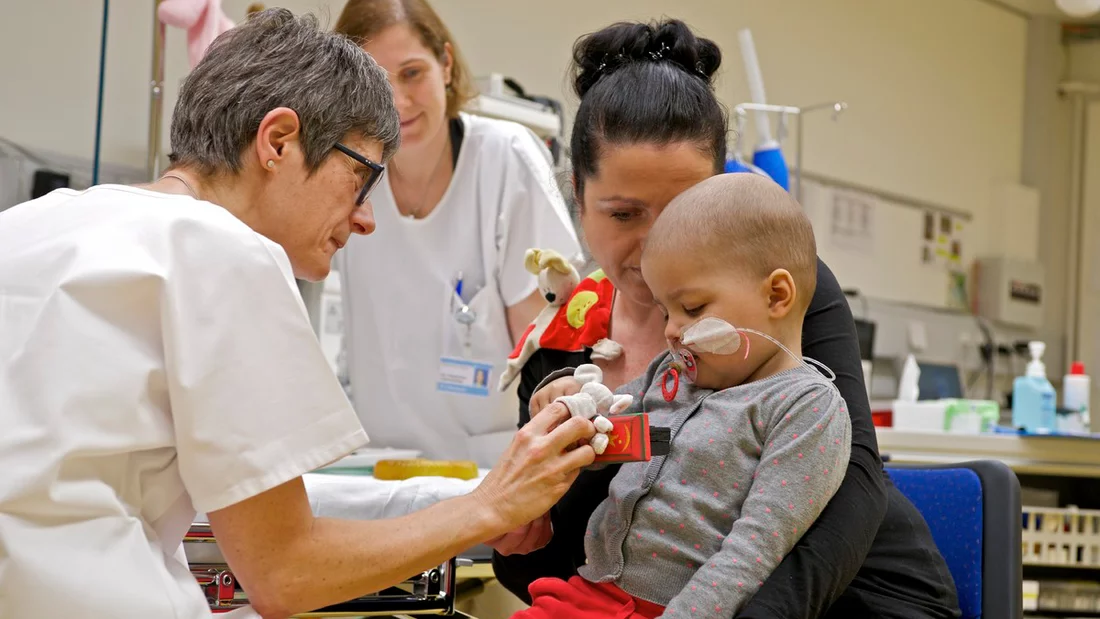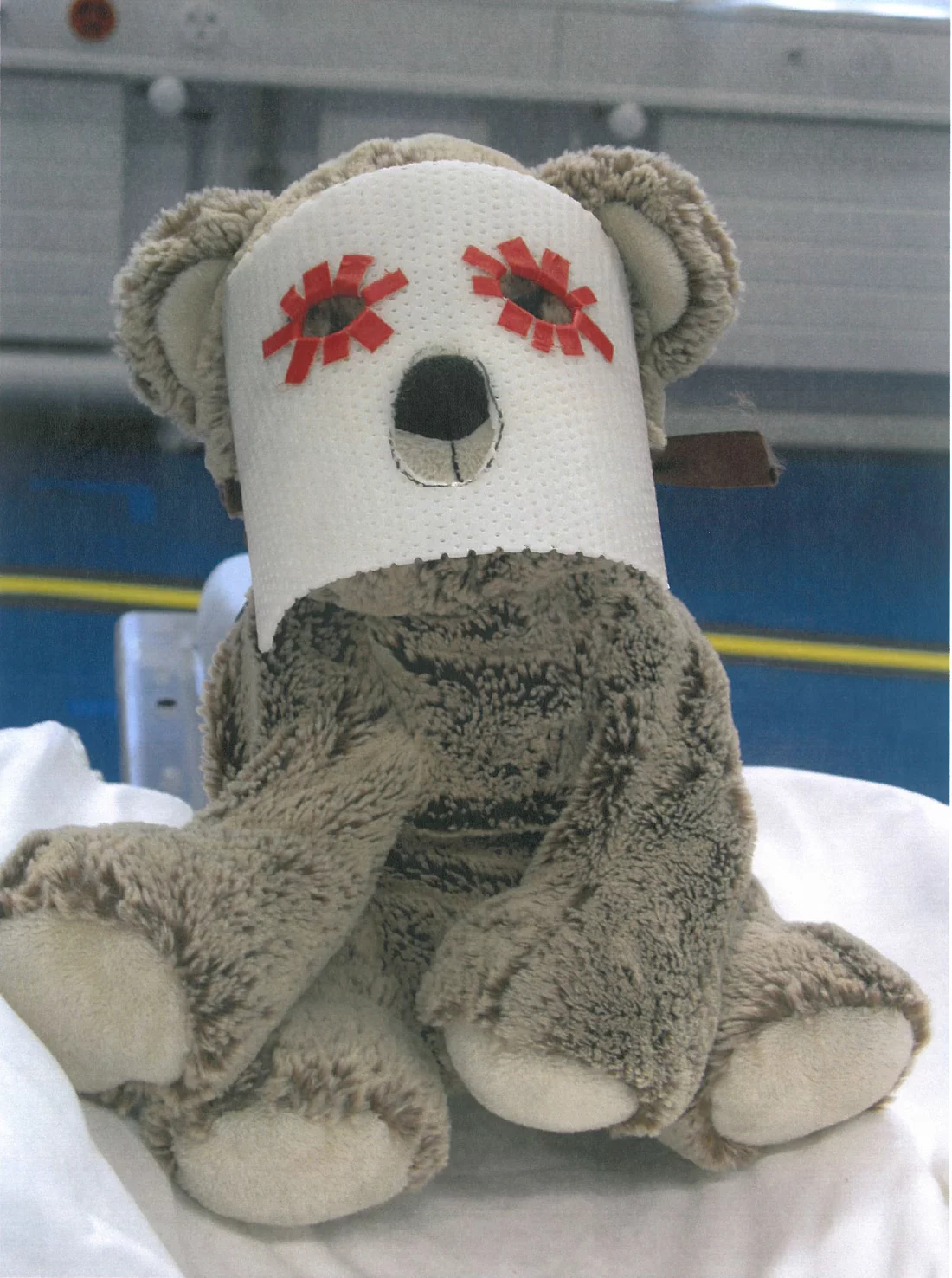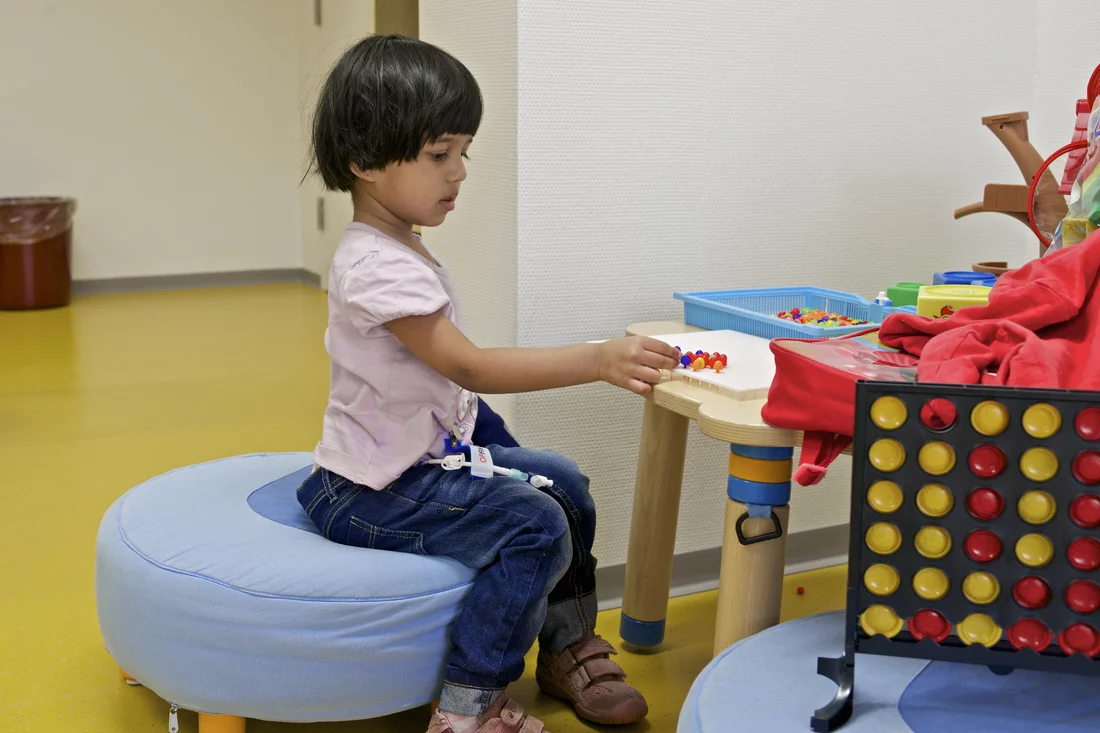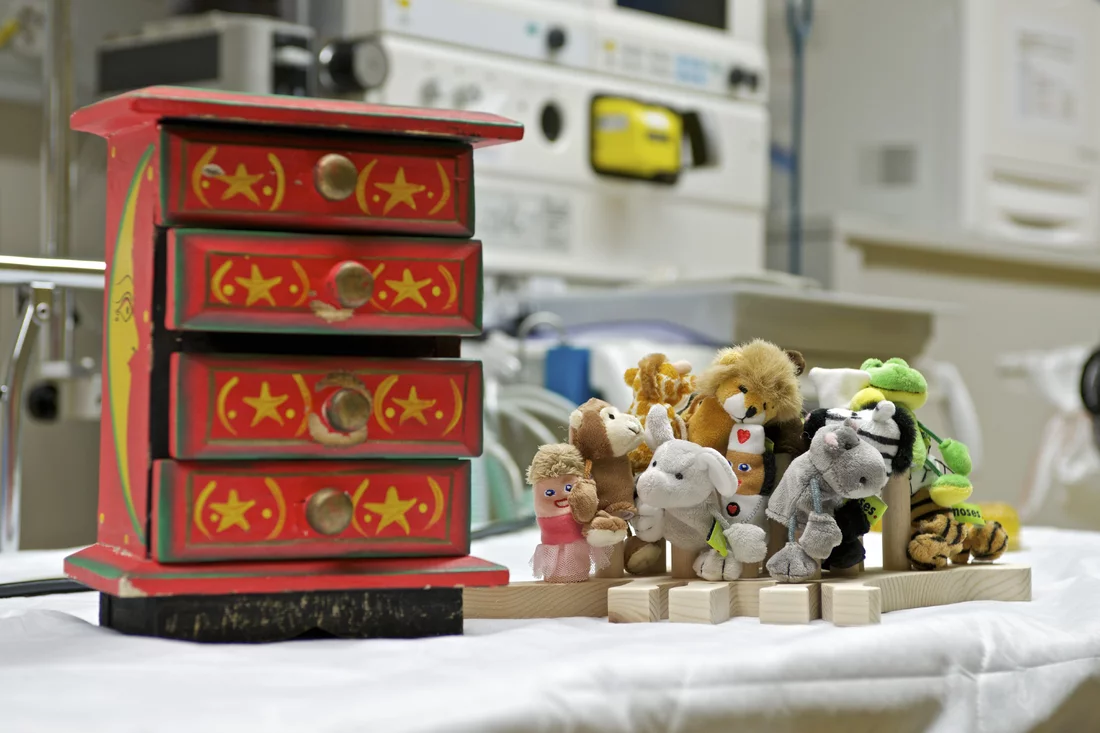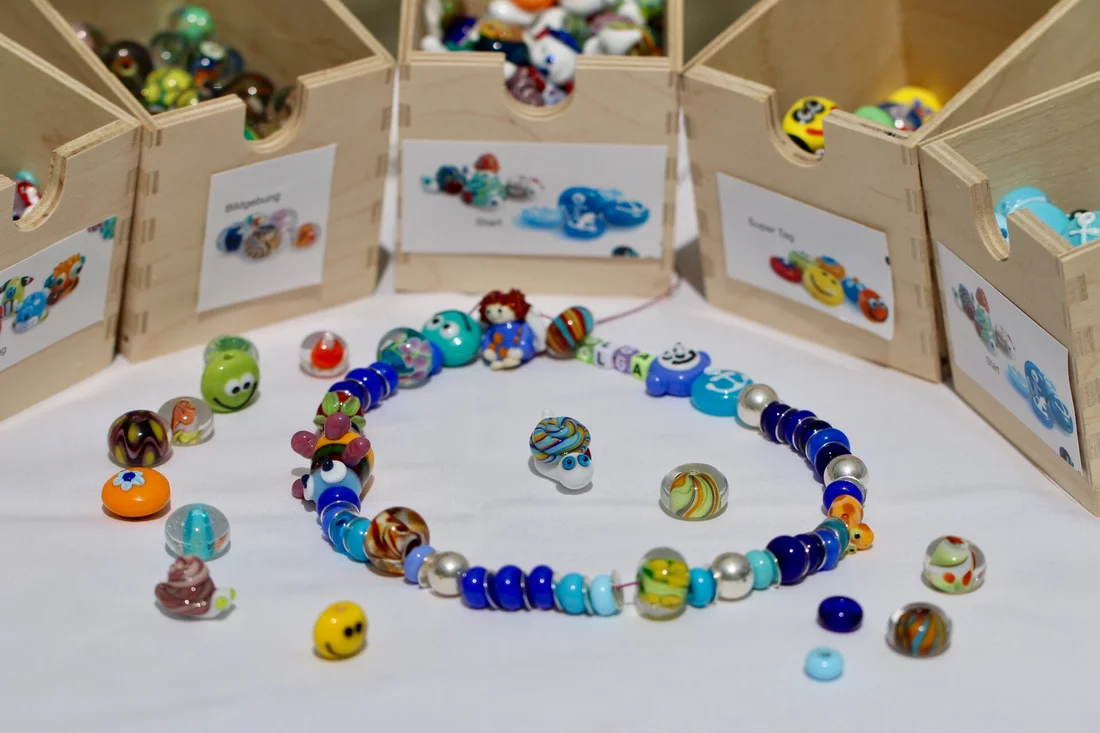Cancer affects only very few children. Nonetheless, malignant tumours can develop above all in the muscles, bones and nerve tissue of the very young. In these cases, any form of radiation is a balancing act. Because the child is still in the process of growing, developing organs can potentially suffer damage. Traditional forms of irradiation and most chemotherapies can have severe side effects. Doctors at the Centre for Proton Therapy at the Paul Scherrer Institute PSI treat children suffering from cancer using proton beams. Protons enable a gentler form of cancer radiation and target the tumour with pin-point precision; healthy tissue is spared. So far, the PSI has treated over 450 children.
Something was wrong. There was this strange feeling of pressure behind the eye. It was more difficult to see clearly. Sometimes, his head hurt. The eight-year-old boy was unsure. Maybe he was imagining things. But three weeks later things had still not improved so he and his parents went to see a doctor. After many examinations, the devastating diagnosis was delivered: rhabdomysarcoma. This is the collective specialist term used by doctors to designate malignant tumours that grow in the soft or connective tissue of muscles. They occur mostly in children and generally develop in the head and neck area, but also in the pelvis and other parts of the body. In principle, they are treatable with the same methods used on adults: with an operation, chemotherapy, radiation—individually or in combination with one another. But there are limits. If the tumour is located close to the eye or the brainstem, those affected prefer to avoid operations since these could lead to blindness, paralysis or other kinds of damage. And traditional forms of radiation have the potential to destroy too many healthy cells situated around the tumour. Proton irradiation using spot-scanning technology is a much safer option.
With this technique, developed by researchers at the Paul Scherrer Institute PSI twenty years ago, the whole tumour is scanned millimetre by millimetre with a proton beam. The protons are directed with such accuracy that they deliver maximum efficacy only in the cancerous cells. The healthy tissue surrounding the tumour is barely affected. One of the first children that we treated here was a boy just under two years of age. He had developed a rhabdomyosarcoma in the eye socket that was very disadvantageously located. He was faced with the choice of undergoing disfiguring surgery or coming to us for proton therapy
, says Lydia Lederer, radiation therapist at the Centre for Proton Therapy CPT at the PSI. Treatment saved the child’s life and his face was not disfigured.
This was 13 years ago. Since that time, about 450 children have been treated with protons at the CPT. Many of them had a tumour in the head or spine—or other sites surrounded by delicate tissue or organs that should not be subjected to irradiation. Lederer, who has been working here for 15 years, has accompanied several hundred children through the process of radiation therapy. The youngest was just nine months old.
Patients from the other end of the world
When very small children develop cancer, the whole family is thrown into something resembling a state of emergency. Many parents are not just worried about their child but simply overwhelmed by the situation. Treatment is administered at a place that’s often far from home and it takes several weeks. This is why the team at the CPT does its best to support children and families wherever it can, although this is sometimes easier said than done: many children come from abroad and do not speak any German. The CPT has such an excellent reputation worldwide that doctors from countries as far afield as Australia send their small patients to Villigen. Over the years, we have learned to accommodate the needs of foreign patients. We always find somebody at the PSI who speaks the child’s mother tongue
, says Lederer, who took the trouble of learning Italian for her patients.
Cutting-edge therapy and warm-hearted care
Multilingualism is self-evident for staff at the CPT. But they consider it just as important to help organize patient care and well-being for the entire duration of treatment. This includes dealing with health insurance and doctors as well as supporting families in their dealings with authorities. But keeping the children as happy as possible despite a cancer diagnosis is their main priority. Many small, lovingly planned details make young patients smile, such as the sun hanging on the waiting room wall, the picture of a giraffe stuck onto the door, or the painted monkeys climbing over the windows. Shelves full of comics and children’s books, toys and marble runs distract small children from the real purpose of their visit. When we think of cancer, we don’t think of lively, curious children. A child wants to play and be happy. As a doctor, it’s important for me to promise the child that I won’t hurt it
, says Fritz Murray, who is at the CPT training to become a radiation oncologist. Radiation therapy can’t be seen or felt. Children are happy here, despite the fact that ours is a highly technical facility.
Murray says that the CPT’s success is based not only on therapy but also on research as well as highest safety standards and quality. These are the aspects of patients care that most benefit cancer sufferers.
Collective expertise for the children’s benefit
Many children are treated on the basis of precisely defined irradiation protocols and their treatment often forms part of international studies carried out in this field. This guarantees that treatment remains cutting-edge and that nothing is left to chance. Precisely which protocol is applied in individual cases depends on the kind of tumour being treated and its location in the body as well as on factors such as the child’s age. Since some tumours are extremely rare, doctors at the CPT rely on the collective expertise of many specialists and begin treatment by discussing every individual case with colleagues from other specialist institutions during weekly board meetings that take place via videoconference. The duration, dosage and body area to be targeted by irradiation are determined. It’s important to assess whether a given area around the tumour needs to avoid being irradiated and whether the child is old and mature enough to keep completely still for the entire duration of each irradiation session (of up to one hour) without being sedated – or if it’s too small and requires an anaesthetic. Children under the age of six are generally given a light anaesthetic to put them to sleep,
explains Murray, because the procedure can be too much of a strain for the youngest patients. This is why a team of anaesthesiologists from the Children’s Hospital in Zurich is always on hand.
Older children, on the other hand, rarely require an anaesthetic.
The precise irradiation of a tumour is decisive for proton therapy success, which is why patients should always assume and maintain the same position. This is difficult, above all for children with tumours in the skull or neck area. There are two possibilities of ensuring that patients find and keep the right position in the irradiation facility: one is the so-called bite block – a plastic imprint of the teeth similar to that used for braces. This mould fits exactly onto the child’s teeth and is connected to the treatment couch with rods. The child only has to bite down once onto the bite block, after which it is attached to the gums using suction. This means that the child doesn’t have to exert the force needed to bite down into the block for the entire duration of a treatment session. The other possibility is the use of a mask made from an imprint of the child’s face with which the child is attached to the treatment couch. Children deal well with both these variants
, explains Lydia Lederer, who constructs both bite blocks and masks for children as part of treatment preparations. She even makes small replicas for teddies or other favourite stuffed toys. Teddy wears a mask just like that of the child and sits next to the child during radiation
, explains the radiology assistant, and this really helps.
Each child is also given a squeaky toy to squeeze if it needs to signal that it’s scared or doesn’t feel well.
Treatment stories made of glass beads
Each child receives a small reward at the end of a treatment session. At the CPT, these take the form of beautiful, hand-made glass beads that are strung together to create a lovely necklace. This reward system is made available by the Children’s Hospital in Zurich. At the beginning of treatment, each necklace consists only of cube-shaped beads with letters spelling the child’s name. But after each examination, each challenge that the small patient has mastered – such as a computer tomography or the making of a treatment mask – a new colourful glass is added. More glass beads follow after every irradiation session so that when it’s all over, every child has a glass bead necklace that tells the story of the child´s personal treatment.
This is a story of fear, courage, hope and sometimes also of despair. Despite this hyper modern and highly effective proton therapy, not all children survive. Sometimes, the tumour is particularly aggressive or has already metastasized. Lydia Lederer had to learn how to deal with such cases: It’s extremely sad to be told that a child has lost its battle with cancer. But I try to focus on the over sixty per cent of cases in which children have survived and tell myself that if it wasn’t for us, they might also have died. That is the bright light on the horizon.
The many and colourful entries in the CPT’s guest book show just how happy and grateful many children and their families are: thank you notes written in many languages and decorated with drawings, stickers and photos. As far as staff at the CPT are concerned, these messages, and knowing that they’ve been able to help the children, is the best part of the job.
Text: Sabine Goldhahn
Further Information
- For an overview of the work carried out at the Centre for Proton Therapy (CPT) and the development of proton therapy at the PSI see the article Added value for cancer patients.
- A special form of proton therapy called spot-scanning technology was developed over twenty years ago at the PSI. This method is now used worldwide and has already helped several thousand patients. Details are provided in the article entitled 20 Years of high-precision combat against cancer.
- Proton therapy at the PSI started with the irradiation of ocular tumours. To date, the PSI itself has treated 6,700 patients. For more information, please see the article Rays of hope for patients.
- A whole team of specialists is responsible for proton therapy safety and quality standards at the PSI. For details please see Getting a handle on safety.
Contact
Dr. Marc Walser, Senior Radiation Oncologist at the Centre for Proton TherapyPaul Scherrer Institute, 5232 Villigen PSI, Switzerland
Telephone: +41 56 310 35 24, e-mail: marc.walser@psi.ch
Lydia Lederer, Chief Medical Technical Radiation Assistant at the Centre for Proton Therapy
Paul Scherrer Institute, 5232 Villigen PSI, Switzerland
Telephone: +41 56 310 36 53, e-mail: lydia.lederer@psi.ch
Dr. Ulrike Kliebsch, Responsible for Science and Information at the Centre for Proton Therapy
Paul Scherrer Institute, 5232 Villigen PSI, Switzerland
Telephone: +41 56 310 55 82, e-mail: ulrike.kliebsch@psi.ch

